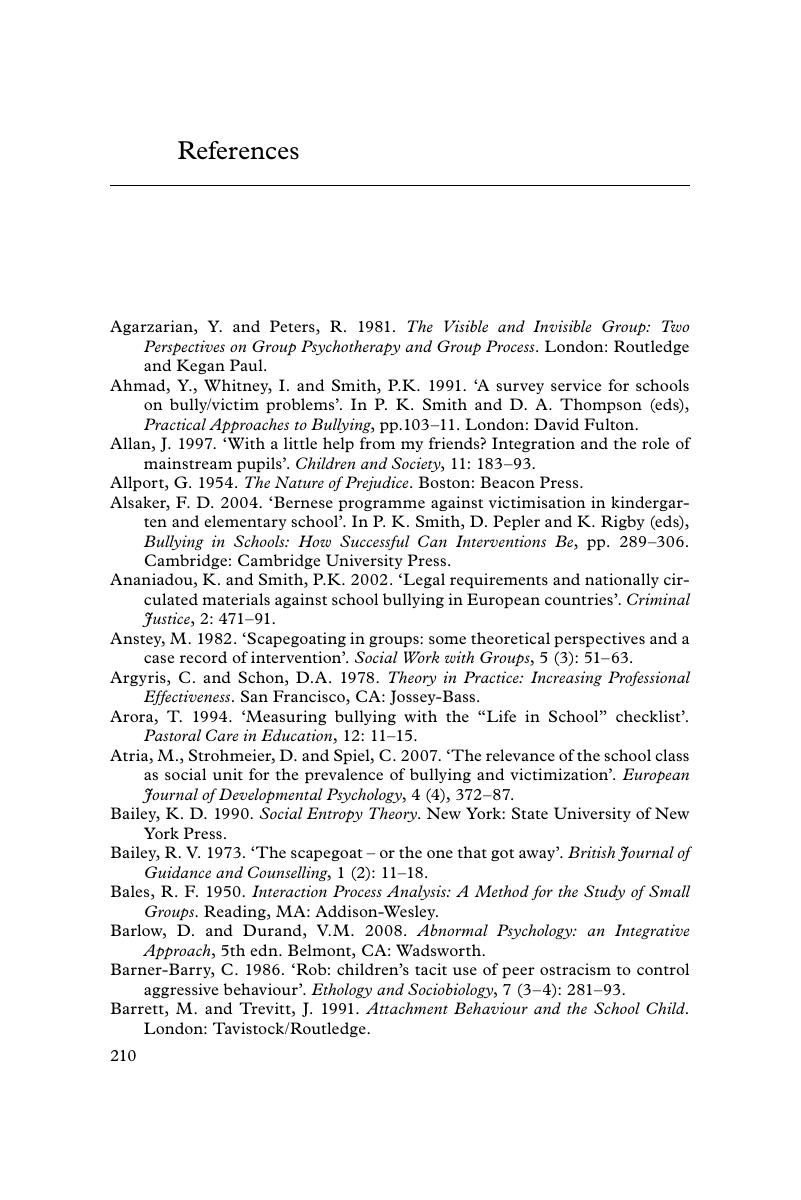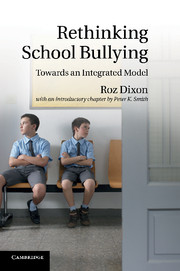Book contents
- Frontmatter
- Contents
- Acknowledgements
- Introduction
- 1 Bullying in schools: the research background
- 2 Understanding schools as systems
- 3 Bullying in groups: ostracism and scapegoating
- 4 Developing an integrated, systemic model of school bullying
- 5 Building personal bodies of knowledge to support research and practice
- 6 Building a public body of knowledge to support research and practice
- 7 Conclusion
- References
- Index
- References
References
Published online by Cambridge University Press: 28 April 2011
- Frontmatter
- Contents
- Acknowledgements
- Introduction
- 1 Bullying in schools: the research background
- 2 Understanding schools as systems
- 3 Bullying in groups: ostracism and scapegoating
- 4 Developing an integrated, systemic model of school bullying
- 5 Building personal bodies of knowledge to support research and practice
- 6 Building a public body of knowledge to support research and practice
- 7 Conclusion
- References
- Index
- References
Summary

- Type
- Chapter
- Information
- Rethinking School BullyingTowards an Integrated Model, pp. 210 - 224Publisher: Cambridge University PressPrint publication year: 2011



